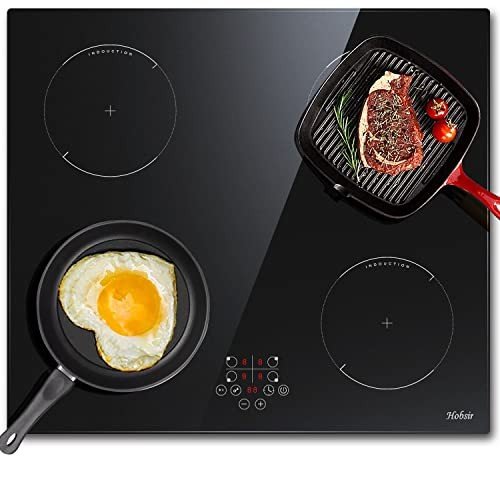Understanding Hobs and Ovens: The Essential Kitchen Appliances
In the world of kitchen devices, few items are as necessary as hobs and ovens. These appliances form the backbone of cooking activities, making it possible for individuals to develop whatever from easy meals to elaborate feasts. Understanding the distinctions, types, and functionalities of hobs and ovens can substantially boost one's cooking experience. This article looks into the complexities of hobs and ovens, providing insights that cater to both novice and seasoned cooks.
What Is a Hob?
A hob, often referred to as a cooktop or range top, is the flat surface area on which pots and pans are put for cooking. Hobs are equipped with heating components that create the required heat for cooking food. They can be found in different types, consisting of gas, electric, induction, and ceramic choices. Each type provides unique advantages and downsides.
Kinds of Hobs
Gas Hobs:
- Heat Source: Natural gas or lp.
- Advantages: Instant heat control and responsiveness, preferred by lots of chefs for accurate cooking.
- Disadvantages: Requires a gas connection and can be less energy-efficient.
Electric Hobs:
- Heat Source: Electric coils or smooth glass-ceramic surfaces.
- Benefits: Generally simpler to clean up, even heating, and extensively available.
- Drawbacks: Slower to warm up and cool off compared to gas.
Induction Hobs:
- Heat Source: Electromagnetic currents.
- Advantages: Quick heating, energy-efficient, and just heats the pots and pans, not the surrounding surface area.
- Drawbacks: Requires compatible pots and pans (ferrous materials).
Ceramic Hobs:
- Heat Source: Electric and has a smooth glass surface.
- Advantages: Sleek look, easy to tidy, and even heating.
- Drawbacks: Can take longer to heat up and cool down.
What Is an Oven?
An oven is an enclosed appliance that cooks food by surrounding it with dry heat. Ovens can be standalone units or combined with hobs in a single home appliance called a range. Ovens are flexible tools that can be used for baking, roasting, broiling, and more.
Kinds of Ovens
Traditional Ovens:
- Heat Source: Electric or gas.
- Benefits: Good for conventional baking and roasting.
- Drawbacks: Can have uneven heat distribution.
Convection Ovens:
- Heat Source: Electric or gas with a fan for distributing air.
- Advantages: More even cooking and much faster cooking times due to air flow.
- Drawbacks: Can be more expensive and may need changes in cooking times.
Microwave Ovens:
- Heat Source: Microwaves.
- Benefits: Quick cooking and reheating; excellent for thawing.
- Downsides: Can not brown or crisp food well.
Steam Ovens:
- Heat Source: Steam generation.
- Benefits: Retains nutrients and moisture in food, much healthier cooking choice.
- Disadvantages: Longer cooking times and generally higher cost.
Key Differences Between Hobs and Ovens
While hobs and ovens serve the primary purpose of cooking food, their performances and utilizes differ substantially. The following table sums up these essential differences:
| Feature | Hob | Oven |
|---|---|---|
| Cooking Method | Direct heat | Confined heat |
| Primary Use | Boiling, sautéing, frying | Baking, roasting |
| Heat Source | Gas, electric, induction | Gas, electric, steam |
| Cooking Area | Flat surface | Enclosed area |
| Cooking Time | Typically much faster | Varies based on dish |
| Control & & Precision | Immediate and direct | Count on settings and timers |
Advantages of Using Hobs and Ovens Together
Combining the use of a hob and an oven can greatly improve the cooking process. Here are some benefits:
- Versatility: Different types of food can be prepared simultaneously.
- Efficiency: Using both enables for numerous cooking strategies, such as searing on the hob and baking in the oven.
- Time-Saving: Multi-tasking can significantly minimize general cooking time.
Maintenance and Care
To ensure the durability of hobs and ovens, regular maintenance is important. Here are some ideas:
For Hobs:
- Clean spills right away to prevent staining.
- Usage proper cleaners for specific products (e.g., ceramic cleaner for glass-ceramic hobs).
- Regularly check gas connections for leakages (for gas hobs).
For Ovens:
- Wipe down the interior after each usage to prevent build-up.
- Usage self-cleaning features if offered, or apply oven cleaners for difficult discolorations.
- Regularly inspect seals and gaskets for wear and tear (to preserve heat efficiency).
FAQs About Hobs and Ovens
1. What is Best Oven And Hob of hob for a newbie cook?
Answer: A ceramic or electric hob is often advised for novices due to reduce of use and cleansing.
2. Can I utilize any pots and pans on an induction hob?
Answer: No, induction hobs require pots and pans made from magnetic products (e.g., cast iron or stainless-steel).
3. How often should I clean my oven?
Answer: It is advisable to clean your oven every few months, or more often if you utilize it frequently.
4. Is it much better to bake in a stove?
Response: Yes, convection ovens are often better for baking as they supply even heat circulation. However, some fragile dishes may gain from traditional ovens.
Comprehending the performance and distinctions in between hobs and ovens is vital for any cooking enthusiast. Whether one prefers the instantaneous heat of a gas hob or the accuracy of an induction cooktop, each type provides unique advantages. Similarly, ovens vary commonly in function, from conventional baking to steam cooking. By valuing these home appliances' functions in food preparation, cooks can improve their culinary abilities and enhance their kitchen activities.

